The Middle East has in recent years been synonymous with bold vision and ground-breaking construction. From the Burj Khalifa to the sprawling new urban districts rising across Saudi Arabia and Qatar, the region has embraced megaprojects as both symbols of progress and engines of economic diversification. Already home to global icons such as the Palm Islands, and the futuristic mega-city of NEOM, the Middle East is doubling down on its ambitions with infrastructure projects of unprecedented scale.
These developments are not simply about aesthetics or tall mega structures—they are about transforming entire economies, creating new ways of living, and positioning the region as a global hub for business, tourism, and innovation. We will explore some of the projects currently reshaping the Middle East into a radically different future.
Dubai Creek Tower & Dubai Creek Harbour
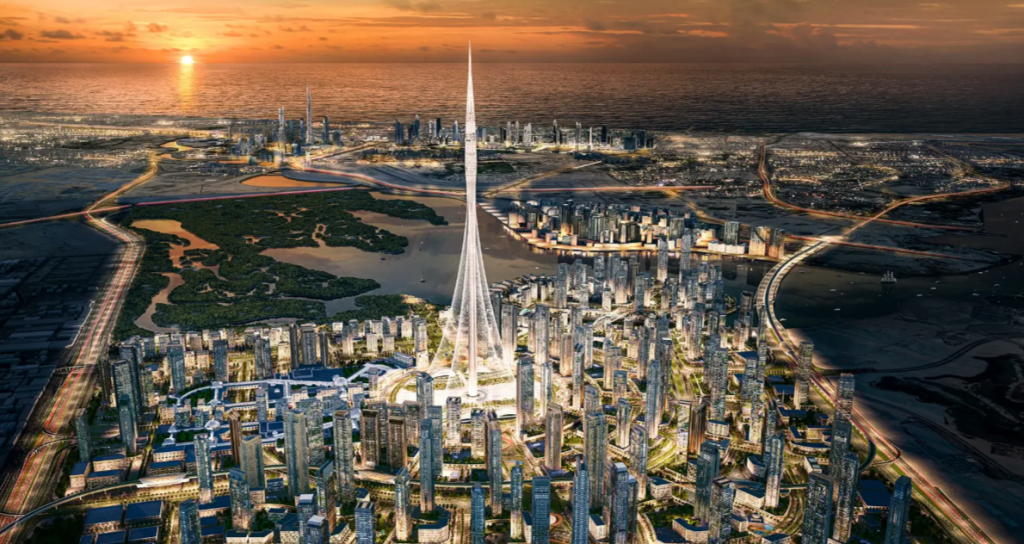
At the heart of Dubai’s next major project lies the Dubai Creek Harbour, a 6-square-kilometer mixed-use district that is three times larger than Downtown Dubai. Within this vast development will rise the Dubai Creek Tower, envisioned as a centerpiece not only of the project but of Dubai’s global image.
Originally conceived to surpass the Burj Khalifa at 1,300 meters, the tower’s final height has been adjusted, yet it still promises to be one of the most striking landmarks in the world. Designed by Santiago Calatrava, the tower draws inspiration from Islamic minarets and the lily flower, blending cultural symbolism with cutting-edge engineering. Its structure relies on a reinforced concrete spine and a network of steel cables for stability, an essential consideration given Dubai’s climate and wind conditions.
Inside, the tower will host retail centers, luxury hotels, restaurants, gardens, and auditoriums. At its pinnacle, ten observation decks—including the Pinnacle Room—will provide panoramic views of Dubai’s skyline. Foundations were completed in 2019, but the pandemic delayed progress. Construction finally resumed in March 2024, and once finished, the tower will include waterfront promenades, cultural institutions, and luxury residences.
Dubai Creek Harbour is more than a construction project—it is a statement of intent. The development will enhance Dubai’s tourism appeal, reinforce its role as a global business hub, and create a vibrant community that reflects the emirate’s vision for sustainable, mixed-use urban growth.
Riyadh Metro: A Vision 2030 Milestone
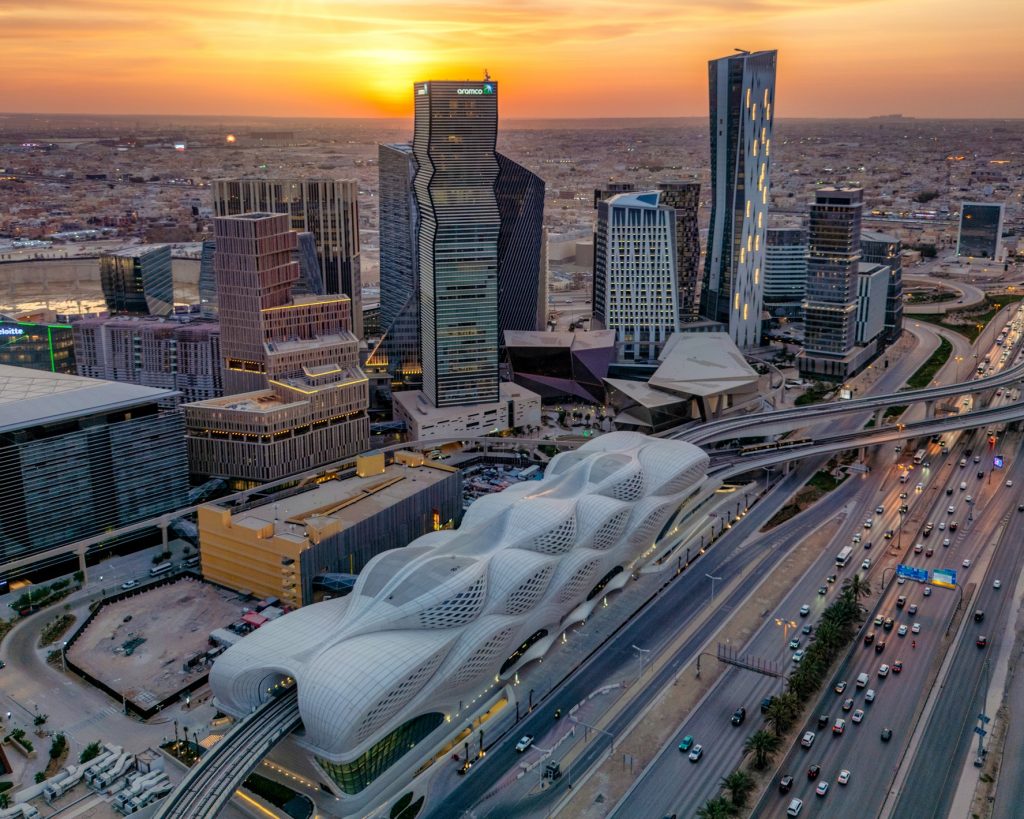
Saudi Arabia’s Riyadh Metro is one of the most ambitious urban transit systems in the world. Spanning 176 kilometers across six lines and serving 85 stations, the metro is a flagship project of the Kingdom’s Vision 2030 plan to modernize infrastructure and reduce dependency on oil revenues.
Construction began in 2014 and involved international firms such as Samsung C&T, Alstom, Freyssinet Saudi Arabia, Atkins, Typsa, and Setec. The network finally reached full service in January 2025, after a phased opening in late 2024.
Each of the six lines serves a specific corridor:
- The Blue Line (38 km)
- The Red Line (25.3 km) along King Abdullah Road
- The Orange Line (40.7 km)
- The Yellow Line (29.6 km) connecting King Khalid International Airport Road
- The Green Line (12.9 km) along King Abdulaziz Road
- The Violet Line (30 km)
The system incorporates advanced features: automated trains, climate-controlled waiting areas, real-time displays, bicycle racks, and facilities for people with disabilities. Stations are designed to handle large flows of passengers with minimal congestion.
The impact has already been dramatic. In its first week of trial operations, the metro recorded 1.9 million riders, a number that rose to 18 million by February 2025. By connecting residential neighborhoods, universities, hospitals, and business districts, the Riyadh Metro is reshaping how the city moves, while also setting a model for sustainable transit in the Gulf region.
Jeddah Tower: Reaching for the Sky
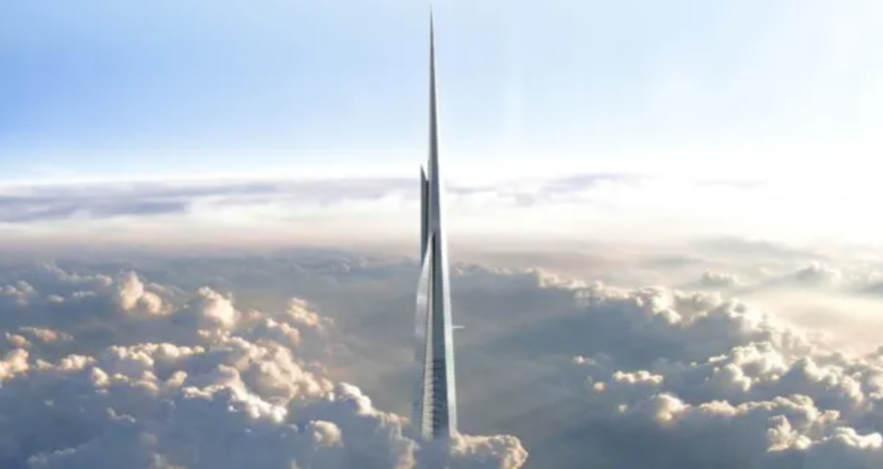
The race to build the world’s tallest building is back on, and Saudi Arabia’s Jeddah Tower is leading the charge. Formerly known as the Kingdom Tower, the skyscraper is designed to exceed 1,000 meters in height, surpassing Dubai’s Burj Khalifa by a wide margin.
Designed by architect Adrian Smith—who also designed the Burj Khalifa—the tower is expected to have 167 floors and will host a mix of residences, offices, hotels, and the world’s highest observation deck at 2,000 feet above the ground. The project, valued at USD 1.2 billion, is slated for completion in 2028 with opening date sometime in 2029.
Its engineering is as ambitious as its scale. The foundation includes a 5-meter-thick concrete raft supported by 270 bored piles, each extending 105 meters deep. The tapering design reduces wind loads, while the stepped façade minimizes vortex formation. Intelligent glass will cut solar heat gain, and advanced building management systems will optimize energy use.
Beyond engineering, Jeddah Tower is expected to transform the city’s economy. Saudi Arabia’s real estate sector is projected to reach USD 248 billion by 2030, and iconic landmarks like Jeddah Tower will help attract international investment, boost tourism, and diversify the economy in line with Vision 2030.
Doha Metro: Phases 2 and 3
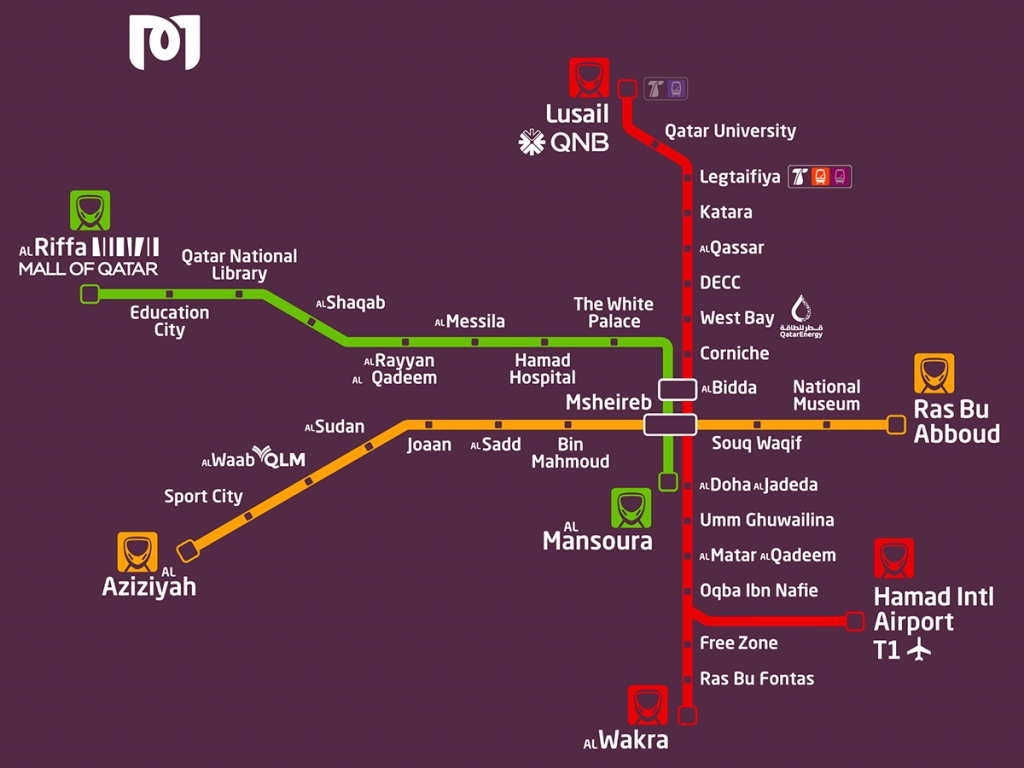
Qatar’s rapid urban growth has spurred one of the most advanced metro systems in the region. The Doha Metro, which opened in 2019, already connects major districts through the Red, Gold, and Green lines. But future expansions will transform it into a national-scale network.
Phase 2—targeted for completion in 2026—will introduce the Blue Line and add 60 new stations, vastly expanding coverage. Phase 3 envisions a 165 km national rail system, connecting Doha to Dukhan, Al-Shamal, and other major centers with passenger and freight capacity.
During the 2022 FIFA World Cup, the metro transported 17.4 million passengers, demonstrating its reliability and efficiency. Similarly, during the 2023 AFC Asian Cup, it carried 6.46 million riders. With transit-oriented development, the Doha Metro is intended not only as a transport system but as a catalyst for livable urban communities.
By reducing traffic congestion, cutting carbon emissions, and improving access to key institutions, the Doha Metro positions Qatar as a leader in sustainable urban mobility.
NEOM: The City of the Future
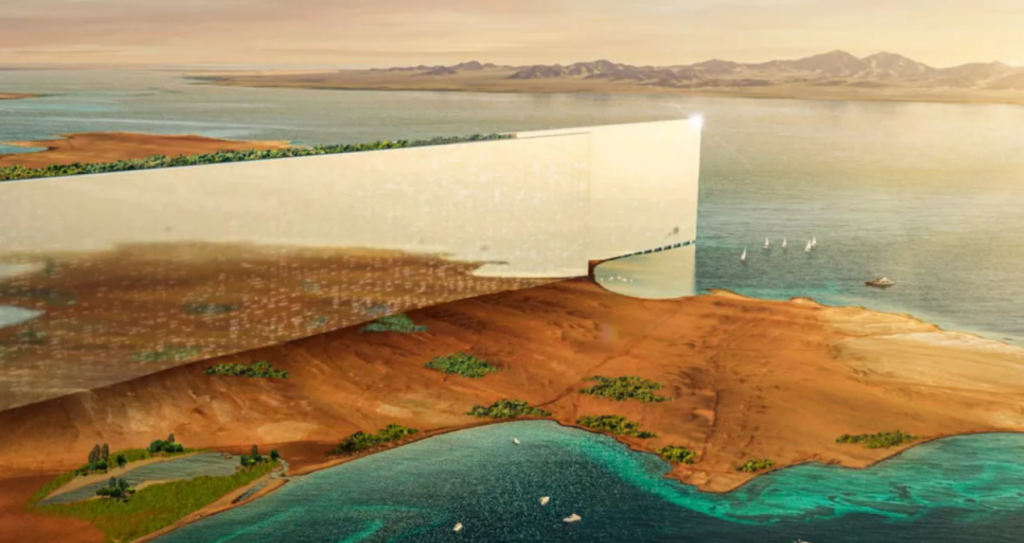
Perhaps no project captures as much global imagination like NEOM, Saudi Arabia’s USD 500 billion megacity under construction in the country’s northwest. Marketed as “the land of the future,” NEOM consists of several revolutionary projects:
- THE LINE: A 170-kilometer linear city designed to house 9 million residents on a footprint of only 34 square kilometers.
- Oxagon: A floating industrial hub powered entirely by renewable energy, designed for advanced manufacturing.
- Trojena: A futuristic mountain tourism destination with a man-made lake, ski facilities, and event spaces.
- Sindalah: A luxury island resort in the Red Sea.
- Magna: A coastal destination along the Gulf of Aqaba.
NEOM will integrate 15 economic sectors, ranging from biotech and clean energy to tourism, digital technology, and media. Already, thousands of employees live and work on-site, and global partnerships are being formed to drive innovation.
Its sustainability commitments are equally ambitious. 95% of land will be preserved for nature, and all regions will run on 100% renewable energy. The project exemplifies Saudi Arabia’s strategy to leapfrog into a post-oil economy, positioning itself as a hub for advanced industries and global investment.
King Abdulaziz International Airport Expansion
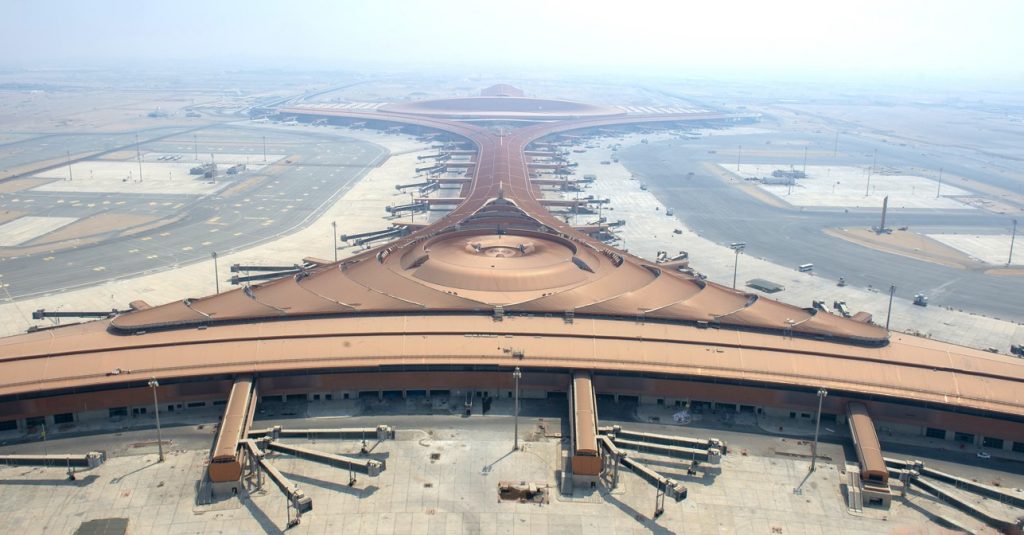
Jeddah’s King Abdulaziz International Airport (KAIA) is undergoing a dramatic expansion aligned with Vision 2030. Terminal 1, covering 810,000 square meters, will eventually accommodate 30 million passengers per year. By 2031, KAIA aims to serve 114 million passengers annually through a $31 billion expansion plan.
The terminal includes modern check-in systems, advanced baggage handling, a people-mover system, and 28,000 square meters of retail and dining space. Its design emphasizes comfort, efficiency, and seamless connectivity, including integration with the Haramain High-Speed Rail, linking Jeddah with Mecca and Medina.
The project demonstrates how Saudi Arabia intends to position itself as a global aviation hub, attracting tourism and facilitating business travel across the region.
Al Maktoum International Airport Expansion
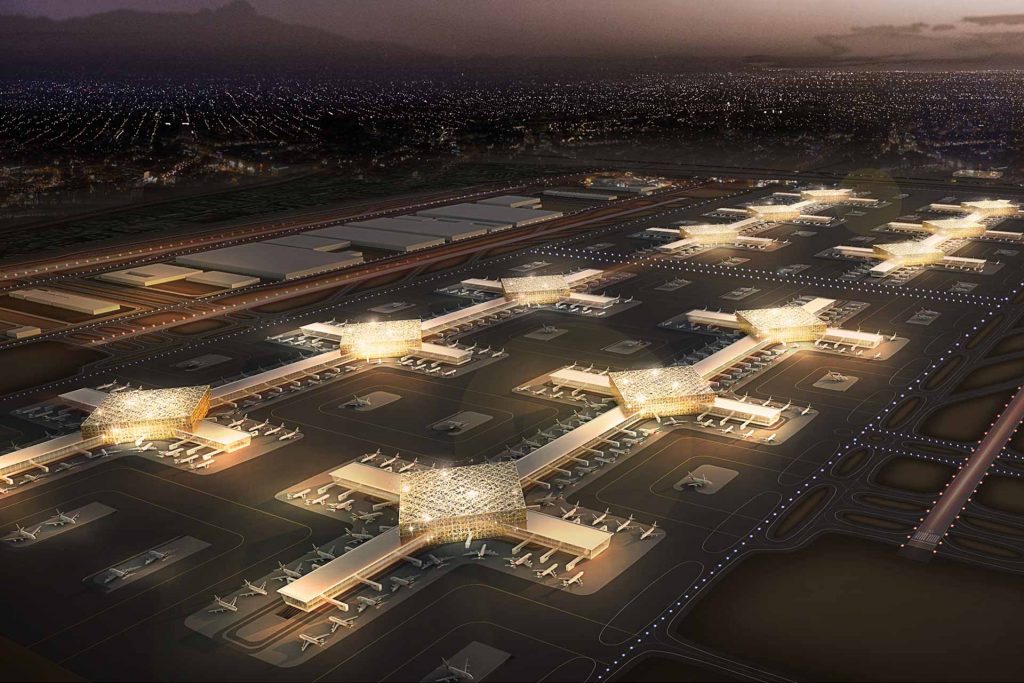
Dubai’s Al Maktoum International Airport (DWC) is set to become the largest passenger airport in the world through a $35 billion multiphase expansion. Currently serving under 1 million commercial passengers annually, the airport will eventually host 260 million passengers and 12 million tonnes of cargo each year.
The expansion includes:
- Five parallel runways
- 400 aircraft gates
- Five passenger terminals
- Two satellite concourses, each capable of serving 65 million passengers
Futuristic designs envision undulating canopies with landscaped oases beneath, providing both efficiency and passenger comfort. Sustainability measures include solar panels, smart irrigation, and rainwater harvesting. The expansion will also allow Dubai International Airport (DXB) operations to eventually shift to DWC, reducing congestion at the current hub.
Riyadh–Dammam High-Speed Rail
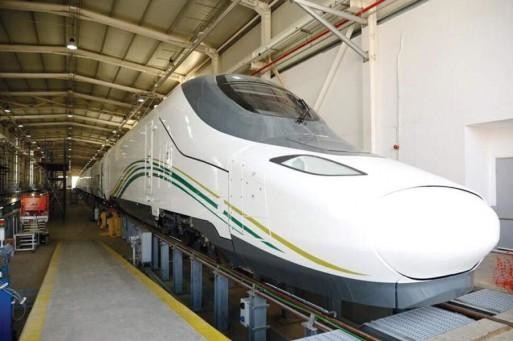
Saudi Arabia is planning a 450 km high-speed railway between Riyadh and Dammam, reducing travel time to just 90 minutes compared to the current four hours.
The project involves desert-specific engineering solutions such as reinforced foundations, air-filtration systems, and sand-resistant technology for trains. The line will complement the Haramain High-Speed Rail, which already connects Mecca and Medina.
This upgrade promises to boost economic activity between the capital and the Eastern Province, enhance tourism, and provide a greener alternative to car travel. With new Talgo trains capable of 200 km/h, the project reflects Saudi Arabia’s commitment to modernizing transport under Vision 2030.
Qatar Urban Transit Projects (2025–2030)
Qatar’s National Vision 2030 prioritizes sustainable transportation, and new urban transit projects are underway to expand connectivity.
The Lusail Tram, the Education City Tram, and the Msheireb Tram are already operational, linking key districts and institutions. The Lusail network, spanning 33 km with 28 stations, will eventually connect to Doha Metro and Hamad International Airport. The Education City Tram serves Qatar Foundation’s vast university campus, while the Msheireb Tram links the redeveloped city center.
Between 2025 and 2030, Qatar plans to build a 300 km light rail system with 98 stations, further integrating airports, stadiums, and urban centers. These projects highlight Qatar’s efforts to reduce car dependency, alleviate congestion, and enhance quality of life in its rapidly growing cities.
From supertall towers and record-breaking airports to futuristic cities and high-speed railways, the Middle East is investing heavily in infrastructure that will reshape its urban landscapes. These projects are more than feats of engineering—they are tools of economic transformation, cultural expression, and sustainability.
By 2030 and beyond, the region may look entirely different. With Riyadh Metro moving millions of riders, NEOM redefining city life, Jeddah Tower setting new records, and airports capable of handling hundreds of millions of passengers, the Middle East is positioning itself as a leader in global infrastructure.
If the past two decades were defined by the rise of Dubai, the next two will be defined by a broader regional transformation—one that truly makes the Middle East unrecognizable.
- Subscribe to Our Newsletter: Stay updated with the latest insights, tips, and innovations in civil engineering.
- Check Out These Must-Read Resources:
- A comprehensive book on civil engineering to enhance your understanding of structural design and construction techniques.
- A captivating book about the lives of great civil engineers, showcasing the pioneers who shaped the modern world.
- A practical project inspection checklist—an essential tool for every engineer involved in site supervision and quality control.
- Dive into the genius of the Renaissance with our recommended book about Leonardo da Vinci, exploring his contributions to engineering and architecture.
- Don’t miss our field notebook and journal, designed specifically for civil engineers and architects to document projects, ideas, and on-site observations
No responses yet